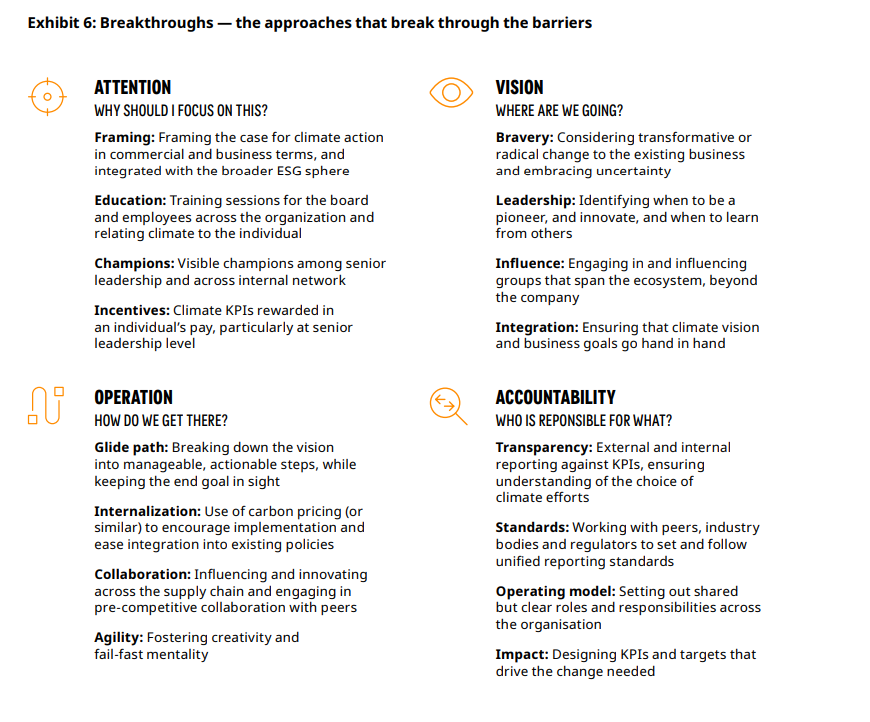Editor’s note: This is the first in a series of articles detailing ways in which the pharmaceutical industry can make sustainability a corporate priority.
One of the biggest challenges facing companies on their sustainability journeys is also arguably the most important — embedding it in the corporate culture. It’s one thing to pledge to cut emissions and to push toward net-zero, but it’s entirely another to build climate action into the life cycle of a product, including influencing partners up and down the supply chain.
In fact, putting a company’s commitment into practice was one of the top barriers to achieving climate goals, according to a new report by Oliver Wyman and the Climate Group. In Getting Going, we interviewed climate leaders in companies and conducted a quantitative survey across sectors and geographic regions. We heard positive success stories as well as a series of steps needed to breakthrough some of the barriers identified below.
Enabling Action
Breaking through these barriers takes courage and leadership. During our interviews with 29 leading companies, including with three of the world’s largest pharmaceutical companies — Astrazeneca, Novo Nordisk, and Pfizer — heard a series of steps leaders can take to embed sustinability throughout the corporate enterprise. We’ve identified four core enablers that make corporate action on climate happen. The topic requires attention throughout the organization, at all management levels. The organization needs a vision to set goals and priorities and give shape to an otherwise disparate and tactical agenda. This vision must be embedded in the reality of the organization’s operation. And the organization must align people’s overall accountability — not specifically for climate — in a way that supports and incentivizes the actions required.
Leading by Example
We heard success stories from the companies across the industries on how leaders can make meaningful progress and developed a menu of approaches and solutions:

The three pharmaceutical companies we interviewed offered examples on how they are meaningful progress on climate action:
- AstraZeneca ran a conference with its suppliers, setting out its Scope 3 targets, and the collaborative approach it intends to use with its suppliers to help achieve them. The company uses social progress as well as environmental considerations when assessing suppliers.
- Pfizer formed a consortium with other pharmaceutical companies to bring about power purchase agreements for their suppliers, aggregating the scale of the pharmaceutical companies with some of the smaller firms that supply them.
- Novo Nordisk developed an employee education program, Circular for Zero, to train employees on climate action. It is tailored to the employee’s level of knowledge on climate change and the company’s approach to reducing emissions
These and other examples are covered in more depth in the Getting Going report.
Pressure is only going to get heavier on companies to be more thoughtful and thorough about their sustainability efforts. Making climate action a core function not only within the corporate strategy, but also within operations — having it become business as usual — must be the goal, especially if we are to achieve scale. We will examine steps the pharmaceutical industry can take to reduce environmental harm in upcoming Oliver Wyman Health articles.
